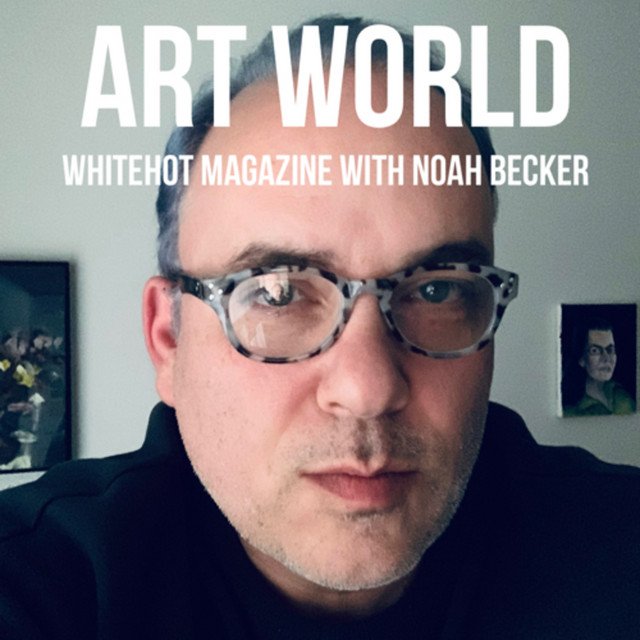Resources
ABOUT US / SERVICES / OUR CLIENTS / STORE / CONTACT
News: WHITEHOT MAGAZINE Interview with Hermine Ford
As the daughter of first-generation Abstract Expressionist Jack Tworkov, Hermine Ford grew up immersed in the counterculture of Abstract Expression and spent her childhood surrounded by her father’s inner circle of influential American painters including William de Kooning and Robert Rauschenberg. With such a significant upbringing, Ford was almost fated to be a painter, despite a natural desire to set herself apart from the strong male figures in her life.
Hermine Ford, Untitled, 2021, 2021. Oil paint, graphite, colored pencil on muslin on shaped wood panel, 38.50h x 51w in. Courtesy of the artist and Furnace.
HERMINE FORD: NORMALLY INVISIBLE
FURNACE - ART ON PAPER ARCHIVE
THROUGH JUNE 12, 2022
By WM, June 2022
As the daughter of first-generation Abstract Expressionist Jack Tworkov, Hermine Ford grew up immersed in the counterculture of Abstract Expression and spent her childhood surrounded by her father’s inner circle of influential American painters including William de Kooning and Robert Rauschenberg. With such a significant upbringing, Ford was almost fated to be a painter, despite a natural desire to set herself apart from the strong male figures in her life.
Eventually and courageously, she gave into destiny and began a longstanding career as an artist in her own right, developing a singular style of painting that examines materiality of the natural and built environment through colorful perforated patterns that combine formal abstraction with technical drafting.
A current solo exhibition of her work, Normally Invisible, on view at Furnace - Art on Paper Archive in Falls Village, CT, presents an intimate selection of works on paper and shaped canvases that highlight the meticulous process and complex concepts behind her well-regarded works.
Normally Invisible will be on view until June 12, 2022.
WM: You have had an impressive, long-standing career as a painter. When did you first begin creating and how did you know you wanted to be an artist?
HERMINE FORD: I was a child who loved to paint and make things. In high school, it was considered foreordained that I would be an artist. But I grew up in a family of artists and had married one, and I tried very hard to become other things. Finally, I gave in and decided I would summon the courage to make my own way as a painter.
What were your early works like? How has your work evolved over the years?
I began drawing from the model at an early age. My first serious works as a young adult were closely observed drawings made in the dunes behind Provincetown. These soon became very abstract and quite minimal in some ways. The first works after the dune drawings and for quite a few years, were long, horizontal paintings divided into equal sections. Reading from left to right with one section still referring to the dune drawings, next a blow-up of a few drawing strokes, next an eccentric shape lifted out of the field of marks, then square flatly painted an artificial green, a green as different from the color of grass as possible, a commercial color associated with building trim. I was asking what is natural? What, if anything, is truly artificial? The scale, the over-all shape, the palette, the references, have expanded over the years. But the combining of observable natural forms with pattern-making by the earliest people, itself lifted from nature, plus what scientists can tell us through maps and diagrams, give me a heady way of embracing it all.
Your work reads as well-thought-out and carefully executed. What does your creative process look like from start to finish?
I make lots of small drawings. When I’m ready I make a large pattern on butcher paper of the full size piece I want to make. I prepare the support, I trace the pattern onto it, cut it out from the board with a jig-saw. I very spontaneously lay very thin washes of paint all over the surface. I’ve given some thought to the color but otherwise I don’t control or judge it very much. When I begin the painting, the over-all shape is set, and I usually have an idea for the main color feeling, but once I start it’s all quite free and intuitive. As I paint, the variegated ground color beneath each stroke changes the effect so the over all color is a continual surprise. I never change the physical shape of the painting, but I build the color, and the texture of the paint within these constraints quite freely. I sometimes make significant changes in the color before I’m done.
Art World: Whitehot Magazine with Noah Becker
Noah talks with Jason Andrew, an independent curator and producer, archivist and writer. He the founding partner at Artist Estate Studio, which manages the Estate of Elizabeth Murray among others. He first met Elizabeth Murray when she invited him to her studio for advice on organizing her studio archives. A decade later, he was asked to manage her Estate. Through research-heavy Instagram posts, edgy exhibitions, and provoking essays like how graffiti influenced Elizabeth Murray, he has re-introduced the artist to a new generation of artists, curators, and collectors. A prominent figure in the emerging Brooklyn art scene, he is the co-founder of Norte Maar whose mission is to promote collaborations among the visual, literary, and performing arts.




